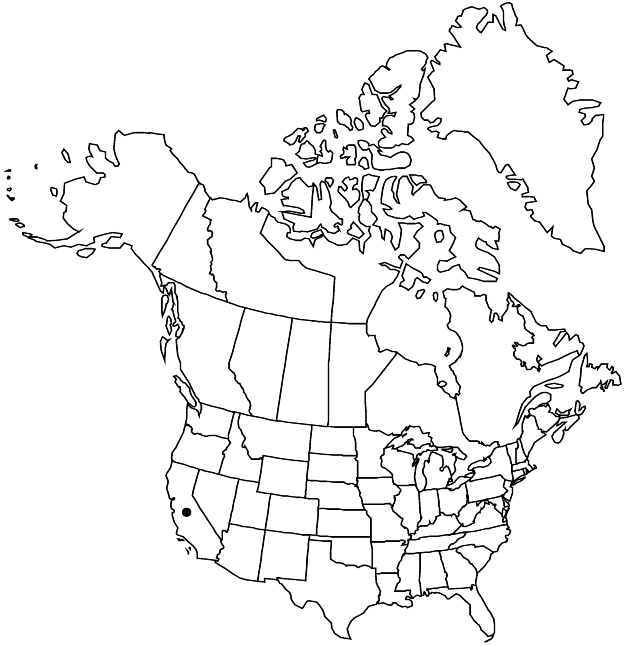Eriogonum temblorense
Leafl. W. Bot. 10: 42. 1963.
Herbs, erect, 1–8 dm, tomentose, greenish gray to gray. Stems: aerial flowering-stems erect, 0.5–1 (–1.5) dm, tomentose. Leaves basal and subbasal, rarely cauline; petiole 2–5 cm, tomentose; basal blade initially suborbiculate, then elliptic, 1.5–4 × 1–1.5 cm, rarely suborbiculate and 2–4 × 2–4 cm when first-formed, densely tomentose on both surfaces, or slightly less so and grayish to greenish abaxially; cauline blade similar to basal but not suborbiculate. Inflorescences cymose, open, 8–70 × 10–50 cm; bracts 1–2.5 × 1–2 mm. Peduncles erect, straight, slender, 1–4 cm, tomentose. Involucres terminal at tips of slender branchlets proximally, not appressed to branches, turbinate, 2–2.5 × 1.5–2 mm, tomentose; teeth 5, erect, 0.5–0.8 mm. Flowers 1.5–2.5 mm; perianth white, glabrous; tepals monomorphic, oblong; stamens included, 1–1.5 mm; filaments usually pilose proximally; styles 0.2–1 mm. Achenes light-brown, 3-gonous, 2–2.8 mm; beak granular. 2n = 34.
Phenology: Flowering May–Sep.
Habitat: Sandy to loamy slopes, mixed grassland communities, oak and juniper woodlands
Elevation: 300-900 m
Discussion
Eriogonum temblorense is rare but much more widely distributed than the closely related E. eastwoodianum. In early anthesis, it is difficult to differentiate between the two species, and plants gathered in May at Cottonwood Pass are particularly troublesome, as the first basal leaf blades are often suborbiculate. Those leaves quickly fall away, and the subsequent basal and cauline leaf blades are elliptic. As circumscribed here, E. temblorense is known from six sites in Monterey (Stone Canyon), San Luis Obispo (Cottonwood Pass and Polonio Pass areas), and Kern (Chico Martinez Canyon, Shale Hills, and hills west of McKittrick) counties.
Selected References
None.
Lower Taxa
"narrowing" is not a number."dm" is not declared as a valid unit of measurement for this property."dm" is not declared as a valid unit of measurement for this property.
